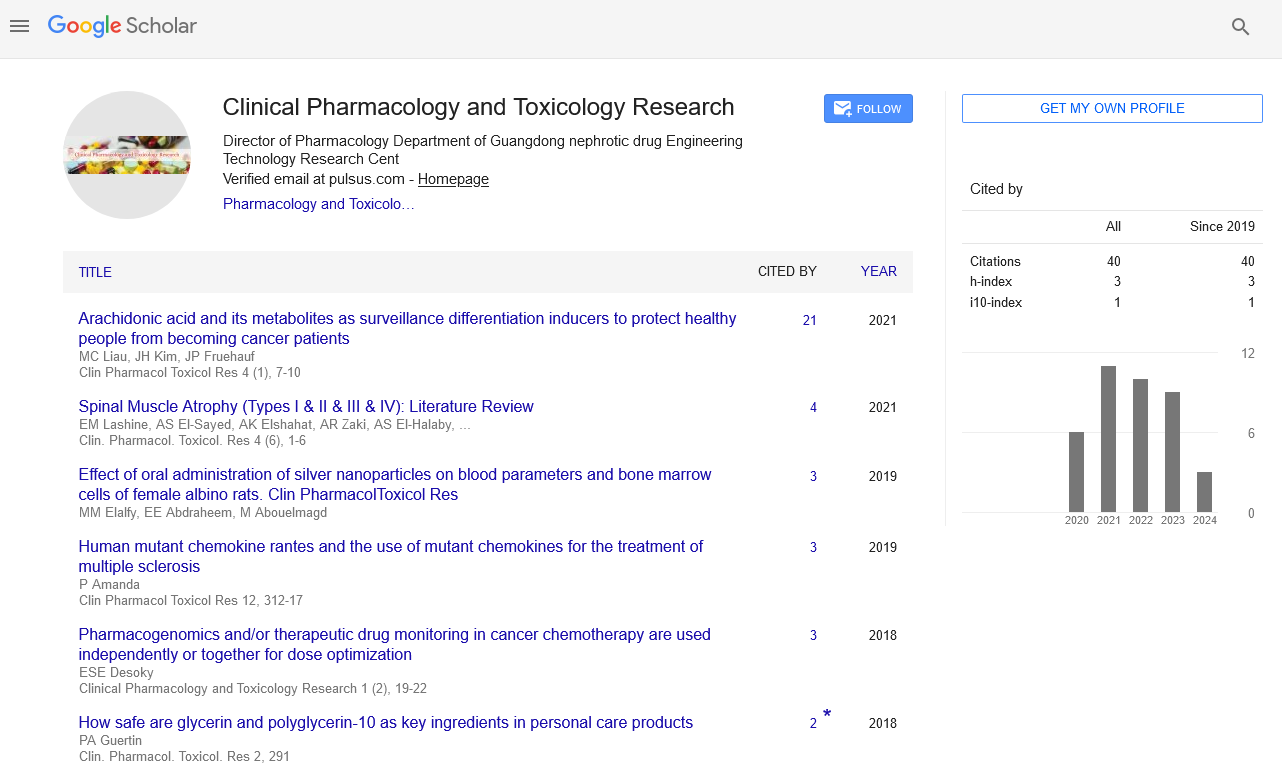An over view of toxicogenomic: Principles and application
Received: 21-Sep-2021 Accepted Date: Oct 04, 2021; Published: 11-Oct-2021
Citation: Smith M. An over view of toxicogenomic: Principles and application. Clin Pharmacol Toxicol Res 2021;4(5):4.
This open-access article is distributed under the terms of the Creative Commons Attribution Non-Commercial License (CC BY-NC) (http://creativecommons.org/licenses/by-nc/4.0/), which permits reuse, distribution and reproduction of the article, provided that the original work is properly cited and the reuse is restricted to noncommercial purposes. For commercial reuse, contact reprints@pulsus.com
Toxicogenomics is a part of toxicology which applies a few genomic examination strategies to decide how synthetic substances, both natural and drug specialists, respond on human and environmental health. Toxicogenomic can give an amazing method for recognizing atomic change in a creature before obvious indication of harmfulness or illnesses are available.
Keywords
Toxicogenomic; Genomes; Proteomics
Description
Toxicogenomics is the accumulation, translation, and storage of data about quality and protein action inside a specific cell or tissue of an organism. Toxicogenomics is the branch of toxicology which focuses on the modulation of gene expression by chemicals and other environmental agents by micro-array technology. Toxicogenomics integrate toxicology with genomics or other high-throughput atomic profiling advancements, for example, transcriptomics, proteomics and metabolomics. Transcriptomic technologies measure mRNA expression in a highly parallel assay system, by using microarrays. Proteomics is the study of accumulation of proteins in living systems. Metabolomics is the study of small-molecule components of biological systems, which are the products of metabolic processes. In drug research, toxicogenomics is distinguished as the investigation of the design and capacity of the genome as it reacts to unfavorable xenobiotic. Toxicogenomic technologies have various different technologies for the analysis of genomes, transcripts, proteins and metabolites. Toxicogenomics is the response of genome and environmental stressor and toxicants. Toxicogenomic has three basic principles. Which are: (1) Understand the relationship between environmental stress and human disease, (2) Identify useful biomarkers of disease and exposed to toxic substance, (3) Elucidate the mechanism of toxicity. It incorporates advances, for example, genome grouping examination, proteomics, metabolomics, and bioinformatics to distinguish poisonous specialist actuated modifications in hereditary articulation, protein articulation, and metabolite creation. The applications of toxicogenomics are: interpret the pathway analysis of toxicity, revealing the potentiality of novel health and drug discovery. Toxicogenomic is also the accumulation, interpretation and storage of information about gene and protein activity in order to identify the toxic substances in the environment. In everyday terms, the utilizations of toxicogenomics can be portrayed into two wide and covering classes: robotic or analytical exploration and predictive toxicology. Toxicogenomics is vital in drug improvement by Contributing to the present status of information on the activities of explicit medications at molecular level. The utility of toxicogenomics is extraordinary yet its useful applications are laden with trouble. One is the inaccessibility of adequately incredible insightful apparatuses to deal with low dosages with extraordinary exactness, just as to recognize potentially insignificant results from important ones. Future aspects of toxicogenomic are: Identify biomarkers of incipient adverse effects which will be more specific, provide a rational basis for risk assessment, facilitate the development on new drugs which have impact on pharmaceutical industry and provide an opportunity to assess the problematic relationship between environmental exposure and disease.





